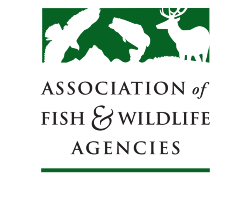Regional assessment of pathogen and toxin impacts on furbearer populations
Strategic Priority
Conservation & Science - Fish and Wildlife Health (“One Health”)
Project Documents
No project documents available.
Project Description
Diseases and toxins pose unique challenges to the management and conservation of wildlife species and can contribute to and exacerbate declines in wildlife populations that already experience other stressors, such as habitat loss and fragmentation. Apparent gray fox (Urocyon cinereoargenteus) population declines in recent decades, notably in the eastern and midwestern United States, have raised concerns among furbearer biologists, managers, and trappers regarding the cause and extent of these declines. There is a paucity of understanding of the potential significance of pathogens and toxins on these declining gray fox populations. Recent research in another ecologically, culturally, and economically important furbearer species in the Northeast, the fisher (Pekania pennanti), revealed that in some regions, anticoagulant rodenticides were detected in 75-100% of trapper-harvested fisher, emphasizing a widespread risk to furbearer species that may decrease species resilience. Anticoagulant rodenticide toxicity can cause mortality, suppressed immune function and reproductive capacity, and reduced body condition. Similar high prevalence of lead (Pb) detections has been observed in New York trapped fishers. The significance of these and other toxins to the population health of northeastern fisher and gray fox populations, including potential morbidity and mortality, may be most influential in decreased individual fitness (e.g., comorbidity status). There is a suite of potential pathogens that may be better able to infect and cause disease in furbearers if they are compromised by immunosuppressive toxins and pathogens. We will complete a comprehensive health assessment, including testing for pathogens and toxins and completing postmortem examinations, of gray fox and fisher collected through a variety of methods across the northeastern United States. We will identify the prevalence and distribution of these pathogens and toxins that can then be used in risk assessments for other species. Additionally, this project will evaluate the significance of immunosuppressive toxins and pathogens by determining if exposure contributes to decreased individual fitness (e.g., comorbidity status), and we will identify geographic patterns of toxin exposure and pathogen prevalence. This project will be completed through the efforts of individuals at the Northeastern Association of Fish and Wildlife Agencies, Cornell University, the State University of New York College of Environmental Science and Forestry, the University of New Hampshire, Pennsylvania Animal Diagnostic Laboratory System New Bolton Center, and the Wildlife Management Institute, as well as northeastern state wildlife agency biologists and veterinarians. This project will result in data that wildlife agencies can directly use in conservation and management plans for these two species and furbearers in general, as well as highlighting future research needs. We will disseminate results to a diversity of stakeholders with shared interests in maintaining strong furbearer populations, and improved public outreach, a more holistic approach to conservation and management plans, and other benefits are expected. Ultimately, the proposed research will provide a baseline of understanding around these complex systems that is capable of informing management decisions, stimulating and facilitating subsequent research, and furthering collaborations among numerous partners.
Project Facts
- Organization Name: Northeast Association of Fish & Wildlife Agencies, Inc.
- Organization Status: NGO classified as 501(c)(3)
- State: Maine
- Obligation: $248,184
- Start Date: 01-01-2025
- End Date: 12-31-2025


